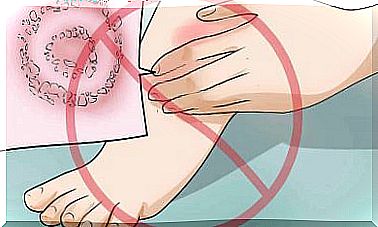Are All High Heels Bad For Your Health?
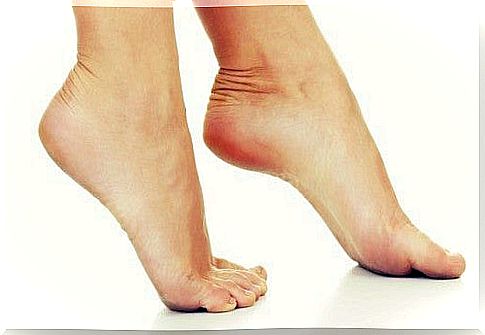
Yes, it is true that high heels are very beautiful. However, this doesn’t mean they aren’t bad for you. If you want to be beautiful, you have to suffer pain, most women will say. But there is no need to suffer because of bad shoes.
In this article we will explain which shoes are best for which activities and how long you should wear high heels.
The worst shoes for women
Research seems to indicate that the worst shoes women can wear have a high and thin heel (so-called ‘stilt heels’).
This is because your body weight is resting on the ball of your foot, where your toes are, putting a lot of pressure on one point.
Your knees and hips also roll forward, which affects the overall balance of your body. This weakens the health of your legs and back. Wearing these shoes damages the part from your ankles to your lower back.
There are also issues with platform shoes, which are very popular today. Many people will say that the weight is distributed over the entire foot, but that is not true.
As with high and thin heels, the pressure is placed on the toes, although thick heels protect your heels a little more. Platforms cause calluses, bunions and ankle and back pain.
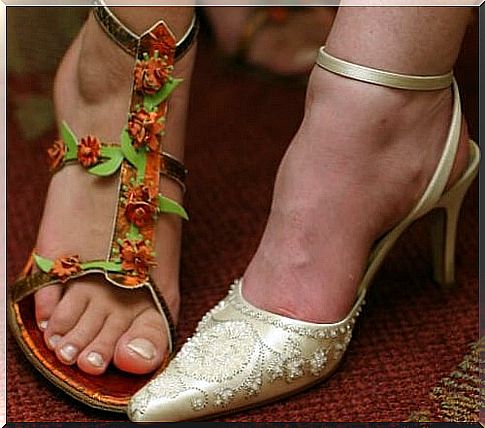
Ankle boots may be a little safer, but you can’t rely on them either. The percentage of your body weight carried by your toes is increased by the height of the heels. This means that the larger the heel, the greater the damage.
Flats (or ballet flats) are also very popular, as they can be worn to work as well as when going out with friends.
But be careful. They may not have heels and are very flat, but they don’t support the soles of your feet, requiring them to work twice as hard. This causes inflammation, back or heel pain or even fractures.
Finally, sports shoes or sneakers give your feet the best support during training or walking. But if you wear them frequently, they can cause mold, especially if you don’t wear cotton socks.
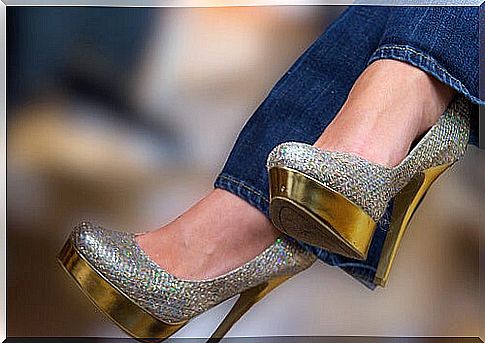
Learn more about wearing heels
Statistics show that women are four times more likely to suffer from foot problems than men. This is because of the shoes they wear, especially heels.
When you place your bare feet on the ground, the front part (the ball) supports 43% of your weight and the heels absorb the remaining 57%.
If your heel is 4 cm high, this percentage changes. When your heel is 6 cm high, the pressure on your toes is 75%. When the heel is more than 10 cm, 90% of your body weight rests on the ball of your foot.
This causes your weight to be unbalanced and your posture changes. The first joint to suffer from this is your ankle. Therefore, women are more likely to get sprains when they wear heels.
Since the lower part of your leg has to absorb the weight placed forward, it contracts and shortens, causing discomfort and contractions of the muscles in your calves.
The knee is another joint that is put under too much pressure when you wear heels because the tension of the sole of the foot is increased upwards.
You bend more than barefoot, which causes an imbalance in your quadriceps and shin muscle.
And the list gets much longer.
It negatively changes the position of your hip joint and increases lower back and back pain. Your whole attitude is basically changed. Bunions will form on your feet and calluses and deformities on your toes, as will pain and swelling after a full day of heeling.
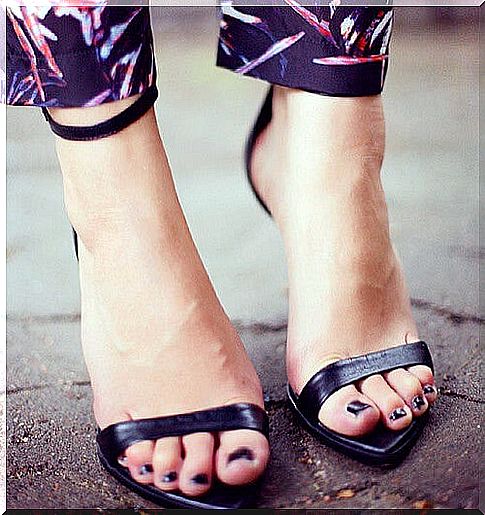
This is how you prevent problems from wearing heels
Now you know the risks of wearing heeled shoes. But what if you still like them and like to wear them to work or to look nicer?
It is best to wear shoes with a heel that is about 2 cm high, so that the support of your ball and heel bone is more balanced, with 50% for each part.
They should not be higher than 3 cm. If you like high heels, go for platform soles, as they do less damage to your feet.
If you occasionally wear heels on special occasions, that’s no problem at all. However, what you should not do is wear them for hours every day, like at work for example. If you can’t wear anything else to work, it’s a good idea to carry an extra pair of shoes in your bag.
When you go to work and back home, you can wear a comfortable pair and put on the heels during work. If you’re sitting at a desk, you can also take them off and put them back on when your boss is there or when you go to a meeting.
It’s also good to know that the narrower the shoe, the less damage it will cause. Regarding the material, leather is best (synthetic when possible). Your toes cannot move ‘freely’.
Images courtesy of Mervi Eskelinen, Jocely Saurini, Larry Johnson, Heather Dow, Maria Morri Thomas R Koll, and Alison Here.
